Black and White Differences in the Labor Market Recovery from COVID‑19
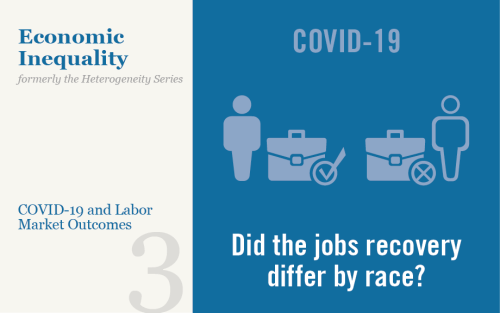
The ongoing COVID-19 pandemic and the various measures put in place to contain it caused a rapid deterioration in labor market conditions for many workers and plunged the nation into recession. The unemployment rate increased dramatically during the COVID recession, rising from 3.5 percent in February to 14.8 percent in April, accompanied by an almost three percentage point decline in labor force participation. While the subsequent labor market recovery in the aggregate has exceeded even some of the most optimistic scenarios put forth soon after this dramatic rise, this recovery has been markedly weaker for the Black population. In this post, we document several striking differences in labor market outcomes by race and use Current Population Survey (CPS) data to better understand them.
Understanding the Racial and Income Gap in Commuting for Work Following COVID‑19
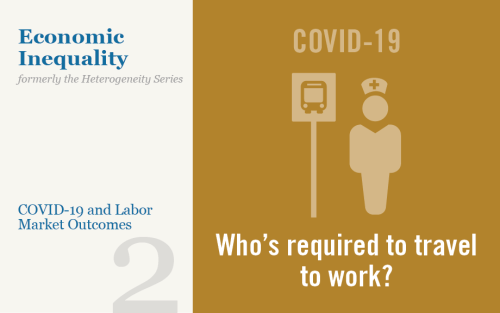
The introduction of numerous social distancing policies across the United States, combined with voluntary pullbacks in activity as responses to the COVID-19 outbreak, resulted in differences emerging in the types of work that were done from home and those that were not. Workers at businesses more likely to require in-person work—for example, some, but not all, workers in healthcare, retail, agriculture and construction—continued to come in on a regular basis. In contrast, workers in many other businesses, such as IT and finance, were generally better able to switch to working from home rather than commuting daily to work. In this post, we aim to understand whether following the onset of the pandemic there was a wedge in the incidence of commuting for work across income and race. And how did this difference, if any, change as the economy slowly recovered? We take advantage of a unique data source, SafeGraph cell phone data, to identify workers who continued to commute to work in low income versus higher income and majority-minority (MM) versus other counties.
Some Workers Have Been Hit Much Harder than Others by the Pandemic
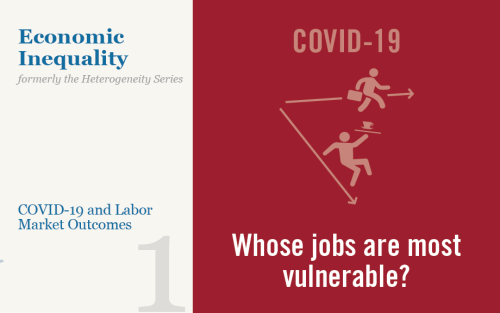
Abel and Deitz look at the outsized impact of the COVID-19 pandemic on some workers, particularly those who are in lower-wage jobs, without a college degree, female, minority, and younger.
Understanding the Racial and Income Gap in COVID‑19: Public Transportation and Home Crowding
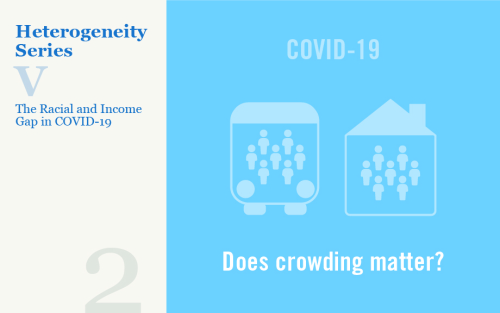
This is the second post in a series that aims to understand the gap in COVID-19 intensity by race and income. In our post yesterday, we looked at how comorbidities, uninsurance rates, and health resources may help to explain the race and income gap observed in COVID-19 intensity. We found that a quarter of the income gap and more than a third of the racial gap in case rates are explained by health status and system factors. In this post, we look at two factors related to indoor density—namely the use of public transportation and increased home crowding. Here, we will aim to understand whether these two factors affect overall COVID-19 intensity, whether the income and racial gaps of COVID can be further explained when we additionally include these factors, and whether and to what extent these factors independently account for income and racial gaps in COVID-19 intensity (without controlling for the factors considered in the other posts in this series).
Understanding the Racial and Income Gap in Covid‑19: Health Insurance, Comorbidities, and Medical Facilities
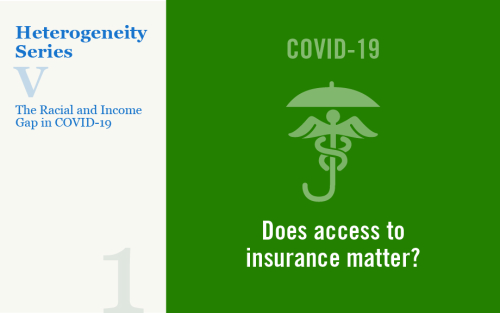
Our previous work documents that low-income and majority-minority areas were considerably more affected by COVID-19, as captured by markedly higher case and death rates. In a four-part series starting with this post, we seek to understand the reasons behind these income and racial disparities. Do disparities in health status translate into disparities in COVID-19 intensity? Does the health system play a role through health insurance and hospital capacity? Can disparities in COVID-19 intensity be explained by high-density, crowded environments? Does social distancing, pollution, or the age composition of the county matter? Does the prevalence of essential service jobs make a difference? This post will focus on the first two questions. The next three posts in this series will focus on the remaining questions. The posts will follow a similar structure. In each post, we will aim to understand whether the factors considered in that post affect overall COVID-19 intensity, whether the racial and income gaps can be further explained when we additionally include the factors in consideration in that post, and whether and to what extent the factors under consideration in that post independently affect racial and income gaps in COVID-19 intensity (without controlling for the factors considered in the other posts in this series).
The Regional Economy during the Pandemic
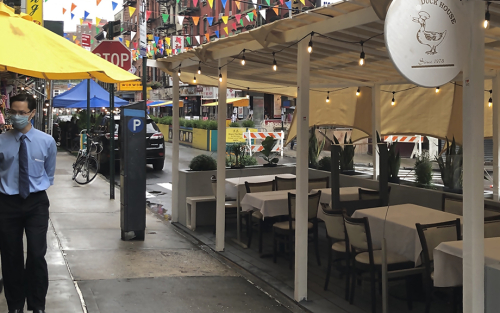
The New York-Northern New Jersey region experienced an unprecedented downturn earlier this year, one more severe than that of the nation, and the region is still struggling to make up the ground that was lost. That is the key takeaway at an economic press briefing held today by the New York Fed examining economic conditions during the pandemic in the Federal Reserve’s Second District. Despite the substantial recovery so far, business activity, consumer spending, and employment are all still well below pre-pandemic levels in much of the region, and fiscal pressures are mounting for state and local governments. Importantly, job losses among lower-income workers and people of color have been particularly consequential. The pace of recovery was already slowing in the region before the most recent surge in coronavirus cases, and we are now seeing signs of renewed weakening as we enter the winter.
How Bank Reserves Are Distributed Matters. How You Measure Their Distribution Matters Too.
Changes in the distribution of banks’ reserve balances are important since they may impact conditions in the federal funds market and alter trading dynamics in money markets more generally. In this post, we propose using the Lorenz curve and Gini coefficient as a new approach to measuring reserve concentration. Since 2013, concentration, as captured by the Lorenz curve and the Gini coefficient, has co-moved with aggregate reserves, decreasing as aggregate reserves declined (such as in 2015-18) and increasing as aggregate reserves increased (such as at the onset of the COVID-19 pandemic).
















 RSS Feed
RSS Feed Follow Liberty Street Economics
Follow Liberty Street Economics